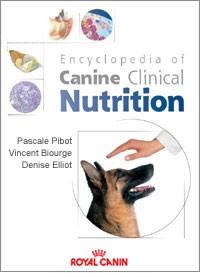
Get access to all handy features included in the IVIS website
- Get unlimited access to books, proceedings and journals.
- Get access to a global catalogue of meetings, on-site and online courses, webinars and educational videos.
- Bookmark your favorite articles in My Library for future reading.
- Save future meetings and courses in My Calendar and My e-Learning.
- Ask authors questions and read what others have to say.
Chronic Diseases of the Stomach
Get access to all handy features included in the IVIS website
- Get unlimited access to books, proceedings and journals.
- Get access to a global catalogue of meetings, on-site and online courses, webinars and educational videos.
- Bookmark your favorite articles in My Library for future reading.
- Save future meetings and courses in My Calendar and My e-Learning.
- Ask authors questions and read what others have to say.
Read
4. Chronic Diseases of the Stomach
Chronic diseases of the stomach result in a number of clinical signs (Table 16), the most important of which is vomiting. Causes of vomiting include gastrointestinal and extra-gastrointestinal diseases (Table 17). There are two main mechanisms that cause gastric vomiting: gastric outflow obstruction, gastroparesis and disruption of the mucosal barrier (Table 18). Hematemesis is defined as vomiting blood. It usually results from the presence of gastric or gastro-duodenal ulceration. Blood can be fresh or partially digested blood ("coffee grounds").
Diagnosis of Gastric Disease
The approach to the chronically vomiting patient depends upon the exact nature of the clinical signs. It is important to distinguish vomiting from regurgitation at an early stage (Table 1), if possible by examining the act of vomition and/or the vomitus. Secondary causes of vomiting (metabolic, toxic) should then be eliminated with laboratory analyses (hematology, serum biochemistry, urinalysis) and diagnostic imaging. Contrast radiography is occasionally useful although most abnormalities can be seen on a survey radiograph. Gastroscopy (or exploratory laparotomy) and biopsy is necessary in most cases of gastric disease. This allows inspection of the gastric mucosa, biopsy procurement (which should be performed even if grossly normal as it is on Figure 7), and foreign body removal (where applicable).
Figure 7. Endoscopic image of the normal gastric mucosa in retrovision. (© V. Freiche)
Table 16. Signs of Gastric Disease |
Vomiting Nausea Anorexia Weight loss Belching Bloating Polydipsia Hematemesis Melena |
Table 17. Indications for Antimicrobial Therapy in Acute Conditions |
Primary gastric disease Chronic gastritis Gastric ulcers Gastric retention disorders Gastric neoplasia |
Part of diffuse GI disease Inflammatory bowel disease Diffuse alimentary lymphoma |
Secondary to intestinal disease (diarrhea usually predominates) Inflammatory bowel disease Intestinal neoplasia Small intestinal obstruction Peritonitis |
Secondary to systemic disease Infectious diseases e.g., distemper, infectious canine hepatitis, leptospirosis Renal failure Hepatic disease Pancreatic disease e.g., pancreatitis, pancreatic neoplasia Other abdominal disease - Urogenital e.g., pyometra - Peritoneum e.g., peritonitis - Direct stimulation of emetic center CNS disease Stimulation of chemoreceptor trigger zone - Drugs e.g., digoxin, erythromycin, morphine, cytotoxics - Toxins - Septicemia Stimulation of vestibular centre - Motion sickness - Vestibulitis Secondary to metabolic / endocrine disease - Hypoadrenocorticism - Ketoacidotic diabetes mellitus - Thyroid disease - Others! |
Table 18. Pathogenesis of Vomiting Caused by Primary Gastric Disease | |
Gastric Outflow Obstruction | Disruption of Mucosal Barrier (gastritis, erosions, ulcers) |
Mechanical - Fibrosis preventing receptive relaxation - Chronic gastritis - Schirrus adenocarcinoma ("leather bottle stomach") - Foreign body - Pyloric stenosis Functional (gastroparesis) - Hypokalemia - Pylorospasm | Barrier disruption leads to back-diffusion of HCl. This in turn causes histamine release, then increased capillary permeability leading to hemorrhage, pain etc. Ischemia - Disturbance of mucosal microcirculation - Acute energy deprivation of mucosal cells NSAIDs Corticosteroids Neoplastic infiltration Uremia Bile acids Spiral bacteria (unconfirmed hypothesis) Hyperacidity caused by hypergastrinemia - Gastrin-secreting tumor - Chronic kidney disease |
Specific Causes of Chronic Gastritis (± Chronic Enterocolitis)
The etiology of chronic gastritis is usually unknown, but possible causes include:
- Immune mediated
- Part of generalized inflammatory bowel disease
- Secondary to other metabolic diseases (chronic renal insufficiency, hepatic diseases, pancreatitis)
- Gastric spiral bacteria (Helicobacter) (controversial)
Laboratory changes are uncommon and/or often non-specific. Gastroscopy and biopsy is required for definitive diagnosis.
Treatment modalities include:
- Dietary management
- Removal of the etiological agent if known
- Corticosteroids for some cases, especially if this forms part of a more generalized IBD, and only after biopsy samples have been analyzed.
- H2 antagonists and/or proton pump inhibitors
- Motility modifiers e.g., metoclopramide, ranitidine and erythromycin.
- "Triple therapy" for spiral bacteria.
Anatomical Outflow Obstruction
Gastric outflow obstruction can have a number of causes including pyloric disease, foreign body and neoplasia. Pyloric stenosis can be congenital (e.g., brachycephalic breeds) or acquired. Surgical treatment is necessary e.g., pyloroplasty or pyloromyotomy. Pylorospasm is a functional rather than structural disorder. The cause is likely related to a gastric motility disorder. Foreign bodies (e.g., balls, peach stones, horse chestnuts, wine corks) can cause intermittent obstruction in a "ballcock" manner. Other common pyloric diseases include polyp and chronic hypertrophic pyloric gastropathy (CHPG; reported in toy breeds).
Delayed Gastric Emptying
This is defined as vomiting following retention of food within the stomach for more than eight hours. Clinical signs include chronic vomiting, which is usually delayed, whilst gastric distension may also be seen. Diagnosis can be inferred from clinical signs, but is confirmed with contrast radiography.
Gastroduodenoscopy is also indicated to rule out other causes or define an underlying cause; exploratory laparotomy, may also be diagnostic and may or may not be necessary for treatment.
Dietary Management of Chronic Gastritis
Patients with chronic gastritis should be fed multiple small feeds. Wet food should be warmed to body temperature. Dilution with water is often necessary and helps to reduce osmolality. Liquid low osmotic diets facilitate gastric emptying.
Diets must be highly digestible, reduced in fat (lower by at least 10% fat DMB, then increased depending on the individuals' tolerance), and should have a low fiber content (<3% crude fiber DMB or 6% total dietary fiber DMB). All of these factors help to increase the rate of gastric emptying.
The underlying etiology may be a primary motility disorder, e.g., dysynergy between antral and pyloric motility, or secondary e.g., delayed motility resulting from inflammatory disease in the GI tract. Motility modifiers (e.g., metoclopramide, cisapride, ranitidine and erythromycin) can be used to increase the speed of gastric emptying. Surgery can be used as last resort (e.g., pyloromyotomy), and may benefit some cases.
Dietary management may also be helpful as adjunctive therapy e.g., low-fat, low-fiber easily digestible food, fed in small frequent meals.
Gastric Ulceration
The causes of gastric ulceration are presented in Table 19. Clinical signs include hematemesis, melena, anemia, weight loss, pain (may demonstrate "praying posture") (Fig. 8), and signs of peritonitis (if the ulcer perforates). Treatment for gastric ulceration involves correcting the underlying cause if identified. Medical management involves the use of acid blocking agents (H2-receptor antagonists, proton pump inhibitors), gastric mucosal protectants (sucralfate), and synthetic prostaglandin analogues (misoprostol). Dietary management is designed to facilitate emptying from the stomach and minimize retention of contents within the gastric lumen. The dietary content should be optimal to assist the healing processes.
Figure 8. "Praying posture".
Table 19. Causes of Gastric Ulceration |
Drugs
|
Cranial and spinal injuries
|
Metabolic
|
Severe gastritis |
Sharp/abrasive gastric foreign bodies |
Mast cell tumor
|
Gastric spiral bacteria |
Gastrinoma |
* On their own, corticosteroids are not typically ulcerogenic - even high (immunosuppressive) doses rarely cause any problems. However, steroids can exacerbate ulceration in a number of circumstances: - If used in conjunction with NSAIDs - If high doses are given to patients with spinal disease (mechanism unknown) - In the presence of "mucosal hypoxia" e.g., secondary to severe anemia. - Another reason for a mucosa prone to injury e.g., primary hemostatic disorder such as immune-mediated thrombocytopenia. - A concurrent disease which also increases the risk of GI ulceration e.g., mast cell tumor, gastrinoma, hypoadrenocorticism, liver disease, renal disease, hypovolemia/shock etc. |
Gastric Neoplasia
Primary neoplasia occurs infrequently in companion animals, and usually occurs in dogs more than cats. Furthermore older male dogs are often predisposed. Adenocarcinoma (75%), lymphoma, lymphosarcoma, leiomyoma and polyps are the most common gastric tumors in dogs. Response to treatment (e.g., chemotherapy) is usually poor, and most will have metastasized by the time of diagnosis. Prognosis is poor.
Bilious Vomiting Syndrome
The pathogenesis of this condition is poorly understood. It is thought to result from a combination of reflux of bile into the stomach and impaired gastric motility resulting in prolonged exposure of the gastric mucosa to bile. This causes a local gastritis and vomiting, usually in the early morning e.g., after a prolonged period without food.
Most diagnostic investigations are unremarkable. Treatment involves altering the pattern of feeding e.g., increasing the frequency of feeding to 2 - 3 times daily, with one of these meals administered last thing at night. Prokinetic drugs (metoclopramide, ranitidine) can also be of benefit in some cases.
Get access to all handy features included in the IVIS website
- Get unlimited access to books, proceedings and journals.
- Get access to a global catalogue of meetings, on-site and online courses, webinars and educational videos.
- Bookmark your favorite articles in My Library for future reading.
- Save future meetings and courses in My Calendar and My e-Learning.
- Ask authors questions and read what others have to say.
About
How to reference this publication (Harvard system)?
Affiliation of the authors at the time of publication
1Faculty of Veterinary Sciences, University of Liverpool, United Kingdom. 2Faculty of Veterinary Medicine, University of Berlin, Germany.



Comments (0)
Ask the author
0 comments